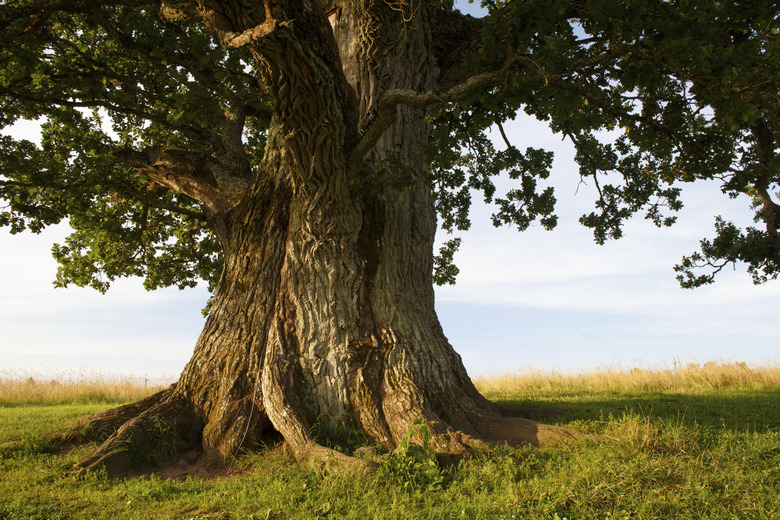Trees Used To Make Furniture
With more than 100,000 different species of trees globally and over 750 in North America alone, woodworkers can choose from an extensive variety of woods. But few of these options offer the strength and beauty suitable for fine cabinetry and furniture, and only a relative handful are commonly used in furniture making.
Oak
Oak trees produce a wood that ranks as the most commonly used hardwood in furniture making. Grown throughout the U.S., Canada and Europe as both deciduous and evergreen trees, oak wood may display one of several tones of red or white and is typically used for sturdy, fine grades of furniture. Its accentuated rings, prominent grain and large pores make oak wood ideal for absorbing stains of any color.
Alder
Alder is a less expensive alternative to oak and is the second most commonly used wood for making furniture. A relative of the birch family, alder trees are primarily found in the Pacific Northwest. Alder wood is softer than oak, and its extra elasticity and pliability make it better suited for carving and intricate detailing. Wood harvested from alder trees provides a consistent color and even absorption of stains and finishes.
- With more than 100,000 different species of trees globally and over 750 in North America alone, woodworkers can choose from an extensive variety of woods.
- Oak trees produce a wood that ranks as the most commonly used hardwood in furniture making.
Maple
Maple is a light-colored hardwood tree that grows widely across the U.S., particularly in the eastern states. Though its dense texture and durability are comparable to more expensive hardwoods, its abundant availability makes maple wood an economical alternative to oak and alder. Maple's even color and grain texture accepts stains and finishes quite well.
Pine
Pine is among the least expensive furniture woods. Pine trees are found in much of the U.S. and in countries with temperate climates around the globe. Numerous types of trees make up the pine family including Ponderosa, eastern white, sugar and Radiata pine. Pine trees produce a softer wood with amber tones, deep brown knots and abstract grain patterns. Pine wood does well with any color of stain but usually requires a conditioning sealer prior to staining to ensure even color distribution.
- Maple is a light-colored hardwood tree that grows widely across the U.S., particularly in the eastern states.
- Though its dense texture and durability are comparable to more expensive hardwoods, its abundant availability makes maple wood an economical alternative to oak and alder.
Red Cedar
Western red cedar is used for a variety of carpentry and building applications, indoors and out. The giant trees grow in the Pacific coast regions of the western U.S. and Canada, and produce a durable wood that is available in large planks. Its durability and ability to withstand intense weather conditions makes it an ideal choice for outdoor furniture. Western red cedar is known for having a deep red tone and a pleasant scent.
Exotic Woods
Many types of softer exotic woods are not suited for everyday rigorous use but are good for making decorative furnishings or cabinetry. Their bright colors, abstract grain patterns and pliable texture make them ideal for carving designs into trims and adornments as well. Australian lacewood has a beautiful copper tone and is commonly used in table-top veneers and trims. African mahogany and Mexican rosewood are harder exotic woods that have distinctive coloring and are suitable for most furniture applications.
- Western red cedar is used for a variety of carpentry and building applications, indoors and out.
- Australian lacewood has a beautiful copper tone and is commonly used in table-top veneers and trims.
